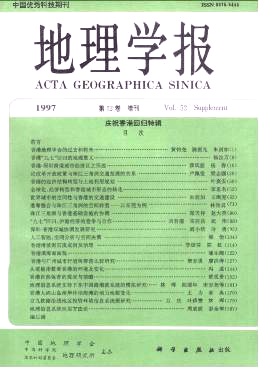Li Chunchu
1. The estuary can generally be divided into three sections. (1) Near mouth section: Its upper boundary is the tidal influence limit in the flood season, and the lower boundary is the limit between fresh water and brackish water (with salinity 0 1‰) in the dry season. This section is controlled by the fresh water and not influenced by diluted water (or mixed water) going upstream, which represents the runoff predominance. (2) River mouth section: Its upper boundary is the limit between the fresh water and brakish water in the dry season, and the lower boundary is at the place where there is the salt water with salinity about 30‰ in the bottom layer during flood season. It is the intruding front of the salt water (or continental water) during flood season where exists mixing and interaction of salt and fresh waters, with reciprocal tidal current. (3) Mouth outside seashore: Its bottom layer is controlled by salt water or continental water, and surface layer is covered by the diluted water (or mixed water), where the movement of tidal current is characterized by the rotation. 2. Accoding to the relative intensity of the influences of the river, tide or wave, the estuaries can be divided into three basic classes: river dominated, tide dominated and wave dominated. Their chief characteristics of dynamics, sedmentations and geomorphologies are also discussed in this paper. 3. The function of estuarine system can possibly be accommodated and satisfied by the input, transfer and output of informations and energies from river and sea, which is activated by continuous adjustment of the system′s elements, such as density ( ρ ), depth of the limit of salt and fresh water ( h′ ), velocity ( U ), slope of water surface ( J ), water depth ( H ), width ( B ) and sediment composition ( D ), and a specific optimized form of the estuary is established. The automatic adjustment of estuary is subordinated to the general rules in the alluvial river processes, including: (1) having balance tendency; (2) making initial energy of the system tend to redistribute in some rules; (3) integrating the adjustment processes, that is, the element of the system are influenced with each other and response as a whole; (4) having feedback of automat. For satisfying a transformation from river to sea or from sea to river, the estuary should modulate and transform by mixing salt and fresh water. However, because different estuarine types have their own predominant dynamic conditions, the estuarine system should draw supports from other regimes to do the automatic adjustment in order to maintain the balance. The characteristics of automatic adjustment for the three classes of estuaries are discussed in this paper.
